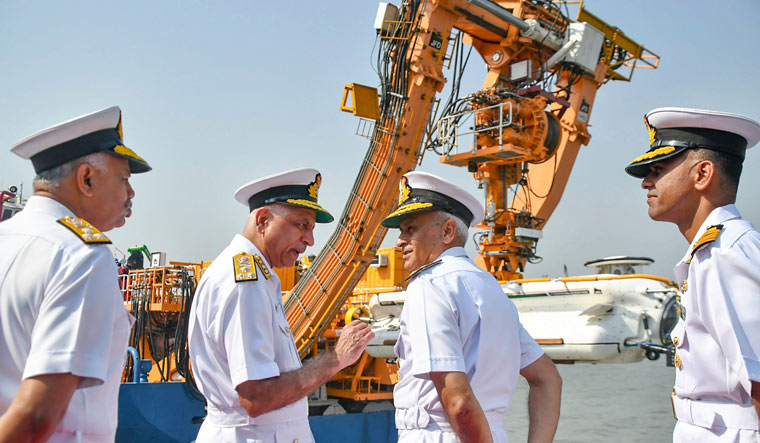On the night of August 14, 2013, the Russian-built INS Sindhurakshak submarine exploded in flames during torpedo loading and sank in the Arabian Sea. In what was Indian Navy's worst loss in more than four decades, 18 sailors, who were trapped in the vessel, lost their lives.
The accident exposed Indian Navy's inability to tackle such situations as it did not have a deep submergence rescue vessel that other navies use to save their trapped sailors.
After five years wait, Indian Navy finally inducted its first deep sea submarine rescue vehicle at its Mumbai-based Western Naval Command on Wednesday.
Experts believe that a timely intervention of DSRVs can save lives of sailors on board the submarine in case of an accident. One of the worst accidents of submarine was of August 2000, when Kursk, the nuclear powered submarine of the Russian Navy, sank in the Barents Sea. A timely deployment of DSRV could have saved the life of more than 100 Russian sailors.
"Acquisition of this capability is a significant and pioneering jump in the Indian Navy's capability in deep submarine rescue," Indian Navy said in its statement.
According to a navy official, Indian Navy currently operates 16 submarines of the Sindhughosh, Shishumar and Kalvari classes as well as nuclear powered submarines. The operating medium and the nature of operations undertaken by submarines expose them to high degree of inherent risk. "In such an eventuality, traditional methods of search and rescue at sea are ineffective for a disabled submarine. To overcome this capability gap the Navy has acquired a third generation, advanced Submarine Rescue System considering of a Non-tethered Deep Submergence Rescue Vehicle (DSRV) and its associated equipment," the Navy added.
Indian Navy, in March 2016, had given contract to James Fisher Defence of the UK for two DSRVs capable of rescuing submarines upto a depth of 650 metres. It is considered to be the most advanced system currently in operation globally. So far, only Russia, USA, China, UK and Singapore have the Deep Sea Rescue Systems in place.
The Navy further said that the DSRV, which is operated by a crew of three, can rescue 14 personnel from a disabled submarine at one time and can operate in extreme sea conditions.
It maintained that the Deep Sea Rescue System would have a global footprint and can be mobilised from the Naval base at Mumbai to the nearest mobilisation port by air/land or sea to provide rapid rescue to the Submarines in distress.
The newly acquired capability would be operated and deployed by the crew of Indian Navy's newly formed Submarine Rescue Unit (West) from its base in Mumbai.



